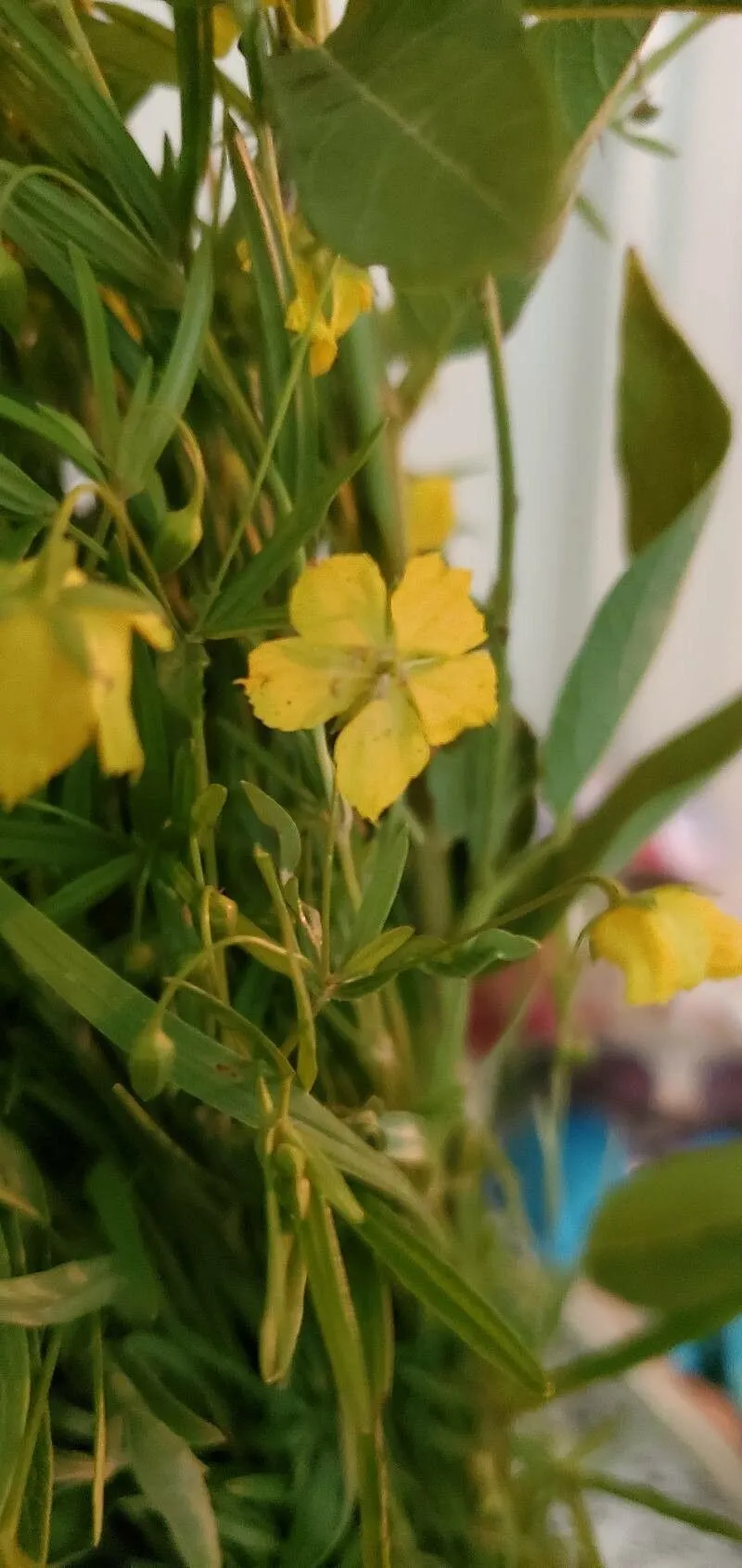
Author: Sims
Bibliography: Bot. Mag. 18: t. 660 (1803)
Year: 1803
Status: accepted
Rank: species
Genus: Lysimachia
Vegetable: Unknown
Observations: S. Canada to NC. & E. U.S.A.
The Fourflower Yellow Loosestrife, scientifically known as Lysimachia quadriflora, is an intriguing perennial herb renowned for its striking appearance and adaptability. Belonging to the Primulaceae family, this plant showcases the rich diversity within the flora of North America.
First documented in the early 19th century by Sims in Botanical Magazine (Volume 18, Plate 660), the Fourflower Yellow Loosestrife quickly garnered attention for its unique qualities. The plant’s native range spans from southern Canada extending down through the eastern United States to North Carolina. This extensive range highlights its adaptability to various climates and soil types.
Characterized by its slender, upright stems, the Fourflower Yellow Loosestrife grows to an average height of 30-60 cm. Its narrow leaves are typically arranged in whorls, creating a visually appealing pattern along the stem. The plant’s most distinguishing feature, however, is its clusters of small, bright yellow flowers, typically arranged in groups of four – a trait that not only inspired its common name but also contributes to its ornamental value.
The blooming period for Lysimachia quadriflora occurs in midsummer, when the vivid yellow flowers provide a striking contrast against the plant’s green foliage. These flowers not only enrich the aesthetic appeal of natural landscapes but also play a vital role in local ecosystems by attracting pollinators such as bees and butterflies.
Ecologically, the Fourflower Yellow Loosestrife thrives in moist, well-drained soils and can frequently be found in meadows, along stream banks, and in prairies. Its preference for sunny to partially shaded areas allows it to integrate well into various habitats, making it a resilient and thriving component of its native ecosystems.
In summary, the Fourflower Yellow Loosestrife (Lysimachia quadriflora) is a noteworthy species within the Primulaceae family, appreciated for its visual charm and ecological significance. Its historical documentation by Sims and its widespread presence from southern Canada to the eastern United States underscore its enduring prominence in North American flora.
Eng: four-flower yellow-loosestrife, fourflower yellow loosestrife, linear-leaf loosestrife, four-flowered yellow loosestrife, narrow-leaved loosestrife, four-flowered loosestrife, linear-leaved loosestrife
Fra: lysimaque à quatre fleurs
En: Fourflower yellow loosestrife, Four-Flower Yellow-Loosestrife, Linear-leaf loosestrife, Four-flowered yellow loosestrife, Narrow-leaved loosestrife, Four-flowered loosestrife, Linear-leaved loosestrife
Fr: Lysimaque à quatre fleurs
Taken Jul 21, 2022 by Ashley Trebil (cc-by-sa)
Taken Jul 25, 2020 by Jean Bernier (cc-by-sa)
Taken Jan 1, 1900 by EOL − Smithsonian Institution, National Museum of Natural History, Department of Botany (cc-by-nc-sa)
Taken Aug 18, 2014 by EOL − Erin Faulkner (cc-by-nc)
Taken Jul 15, 2015 by EOL − bendingtree (cc-by-nc)
Taken Nov 7, 2013 by EOL − Daniel Carter (cc-by-nc)
Taken Jun 5, 2015 by EOL − Kelsey McIntosh (cc-by-nc)
Taken Jun 5, 2015 by EOL − Kelsey McIntosh (cc-by-nc)
Family: Myrtaceae Author: (F.Muell.) K.D.Hill & L.A.S.Johnson Bibliography: Telopea 6: 402 (1995) Year: 1995 Status:…
Family: Rubiaceae Author: Pierre ex A.Froehner Bibliography: Notizbl. Bot. Gart. Berlin-Dahlem 1: 237 (1897) Year:…
Family: Sapindaceae Author: Koidz. Bibliography: J. Coll. Sci. Imp. Univ. Tokyo 32(1): 38 (1911) Year:…
Family: Asteraceae Author: A.Gray Bibliography: Pacif. Railr. Rep.: 107 (1857) Year: 1857 Status: accepted Rank:…
Family: Fabaceae Author: Medik. Bibliography: Vorles. Churpfälz. Phys.-Ökon. Ges. 2: 398 (1787) Year: 1787 Status:…
Family: Aspleniaceae Author: (Cav.) Alston Bibliography: Bull. Misc. Inform. Kew 1932: 309 (1932) Year: 1932…